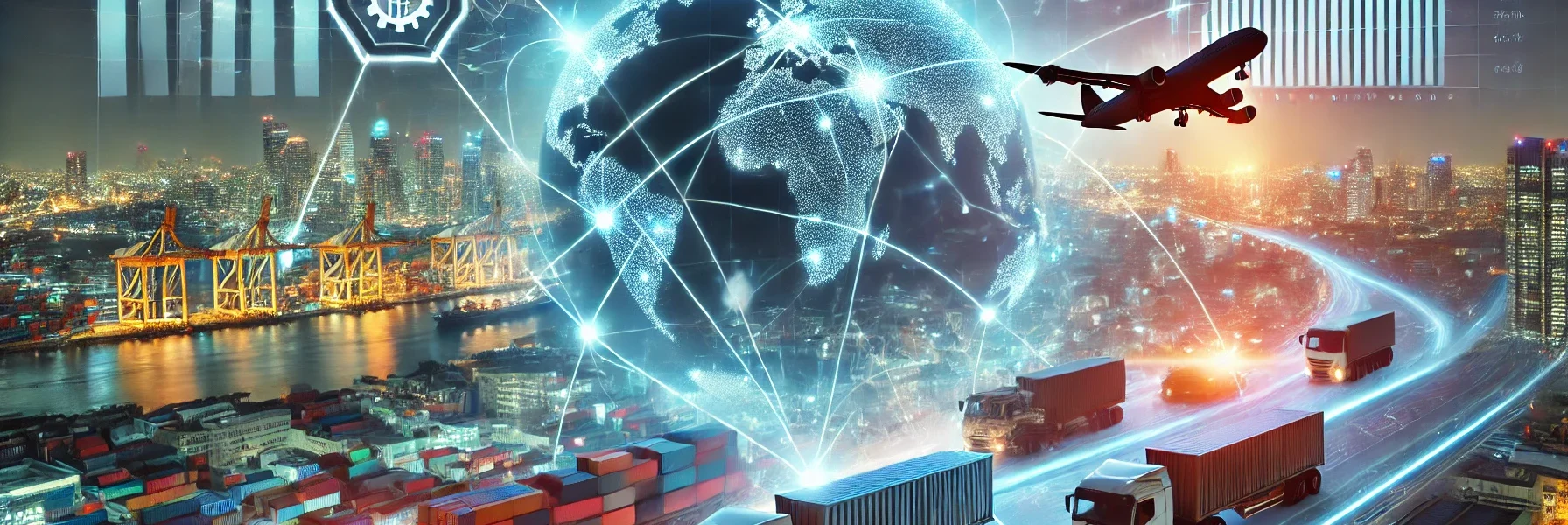Introduction
Global trade has always been the backbone of economic development, fostering international cooperation, boosting innovation, and driving market expansion. As we enter 2025, the landscape of global trade is undergoing rapid transformation due to technological advancements, shifting economic policies, geopolitical tensions, and sustainability concerns.
This article explores the key trends shaping the future of global trade and the challenges businesses, policymakers, and investors must navigate to remain competitive and resilient in an evolving market.
Key Trends in Global Trade for 2025
1. Digitalization and AI-Powered Trade
The integration of artificial intelligence (AI), blockchain, and big data analytics is revolutionizing trade logistics, supply chains, and financial transactions.
- AI-driven predictive analytics help optimize supply chain management by forecasting demand and reducing delays.
- Blockchain technology enhances transparency and security in international trade agreements and payments.
- E-commerce growth has accelerated global trade, allowing businesses to reach international markets without physical presence.
2. Reshoring and Nearshoring Strategies
In response to supply chain disruptions caused by the COVID-19 pandemic and geopolitical conflicts, many countries are adopting reshoring and nearshoring strategies.
- Reshoring refers to bringing manufacturing and production back to home countries to reduce dependency on foreign suppliers.
- Nearshoring involves relocating production closer to target markets to minimize transportation costs and risks associated with long-distance supply chains.
3. Sustainability and Green Trade Initiatives
Environmental concerns and regulatory pressures are pushing global trade toward sustainability.
- Carbon footprint reduction policies are influencing trade decisions, with businesses opting for eco-friendly supply chain solutions.
- Green financing initiatives are supporting companies investing in renewable energy and low-carbon transportation.
- Circular economy models are gaining traction, emphasizing recycling and sustainable production to minimize waste.
4. The Rise of Regional Trade Agreements (RTAs)
As global trade dynamics shift, regional trade agreements are becoming more influential.
- The Regional Comprehensive Economic Partnership (RCEP) in Asia is strengthening intra-regional trade and reducing tariffs among member countries.
- The African Continental Free Trade Area (AfCFTA) aims to boost trade within Africa by eliminating barriers to commerce.
- USMCA (United States-Mexico-Canada Agreement) is redefining North American trade relations by focusing on fair labor practices and digital trade provisions.
5. Currency and Payment Innovations in Trade
The rise of central bank digital currencies (CBDCs) and cryptocurrency adoption is reshaping how global transactions are conducted.
- CBDCs offer a secure and efficient payment mechanism, reducing reliance on traditional banking systems.
- Cryptocurrencies and stablecoins provide an alternative cross-border payment solution, reducing transaction fees and settlement times.
- Smart contracts on blockchain networks enable automated, tamper-proof trade agreements and transactions.
Challenges Facing Global Trade in 2025
1. Geopolitical Tensions and Trade Wars
Ongoing disputes between major economies, such as the U.S. and China, continue to disrupt global trade patterns.
- Tariffs and trade restrictions are affecting the cost of goods and raw materials.
- Economic sanctions on certain countries are limiting market access for businesses operating in affected regions.
- Political instability in emerging markets is causing uncertainty for investors and traders.
2. Supply Chain Disruptions and Logistics Bottlenecks
Global supply chains remain vulnerable to unexpected disruptions, including natural disasters, pandemics, and cyberattacks.
- Port congestion and shipping delays are impacting timely deliveries and increasing costs.
- Shortages of key components such as semiconductors are slowing down production in various industries.
- Cybersecurity threats pose risks to digital supply chains and sensitive trade data.
3. Protectionism and Nationalistic Trade Policies
A growing trend of economic nationalism is leading some countries to prioritize domestic industries over global trade.
- Import restrictions and export bans on critical goods, such as food and medical supplies, are creating market imbalances.
- Increased tariffs and quotas are making cross-border trade more expensive and complex.
- Trade policy uncertainty discourages foreign investment and international business partnerships.
4. Compliance with Evolving Trade Regulations
As governments implement stricter regulations, businesses must adapt to new compliance requirements.
- Data protection laws impact how companies handle customer data in international transactions.
- Sustainability reporting mandates require businesses to disclose their environmental impact.
- Customs and taxation changes can create administrative burdens and affect pricing strategies.
5. Labor Market Challenges and Skills Gaps
The shift toward digital trade and automation is changing the demand for skilled labor.
- Workforce reskilling programs are needed to help employees transition into tech-driven industries.
- Labor shortages in manufacturing and logistics are causing delays and increased costs.
- Rising wages in emerging markets are impacting cost structures for businesses relying on offshore labor.
Conclusion
The future of global trade in 2025 presents both exciting opportunities and complex challenges. While digital transformation, regional trade agreements, and sustainability initiatives are driving positive change, businesses must navigate geopolitical tensions, supply chain disruptions, and evolving trade regulations.
To thrive in this dynamic landscape, companies must embrace innovation, adapt to new market conditions, and collaborate with governments and international trade organizations. Policymakers, in turn, must strike a balance between protecting domestic industries and fostering global trade cooperation.
By staying informed and agile, businesses and investors can capitalize on emerging trends and contribute to a more resilient and sustainable global trade ecosystem.
Disclaimer
This article is for informational purposes only and does not constitute financial, legal, or investment advice. Readers should consult with professionals before making trade-related decisions.




